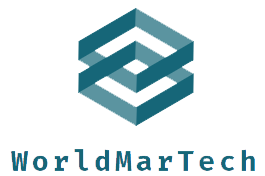What are Varicose Veins?
Varicose blood vessels are a common condition that influences the capillaries in the legs and also feet. They happen when the valves in the blood vessels come to be weak or damaged, leading to the merging of blood and the augmentation, turning, and protruding of the veins. Varicose veins can be blue, red, or flesh-colored, and they may show up raised or inflamed.
Varicose veins are an outcome of a condition called venous lack, which occurs when the shutoffs that regulate blood flow in the veins do not work appropriately. Generally, these shutoffs permit blood to stream in one direction– in the direction of the heart– yet when they become weak or harmed, blood can flow in reverse and also accumulate in the capillaries. This causes them to expand and end up being varicose capillaries.
Signs of Varicose Veins
The symptoms of varicose veins can vary from person to person, however common indications consist of:
- Swollen, twisted, or bulging veins that show up simply under the surface of the skin.
- Pain or aching in the legs, especially after extended standing or sitting.
- Heaviness or a feeling of volume in the legs.
- Burning or itching feeling around the affected capillaries.
- Constraining or muscle pain in the legs, specifically at night.
- Skin discoloration or ulcers near the influenced blood vessels.
These signs are usually a lot more noticable after long periods of standing or sitting, in addition to during cozy weather. It’s important to note that in some cases, varicose blood vessels can be asymptomatic, indicating they do not create any obvious signs.
Causes and Risk Aspects
There are numerous aspects that can raise the threat of developing varicose capillaries, consisting of:
- Age: The risk of varicose blood vessels raises with age, as the blood vessels shed elasticity and also end up being more prone to damages.
- Gender: Women are more likely to develop varicose veins than guys, partly as a result of hormone changes during pregnancy and also menopause.
- Household history: Having a household background of varicose capillaries raises the possibility of developing the condition.
- Weight problems: Excess weight places additional pressure on the veins, making them much more susceptible to damage.
- Prolonged resting or standing: Jobs that include long periods of sitting or standing can increase the threat of varicose veins.
- Maternity: Pregnancy puts boosted pressure on the capillaries, and also hormone adjustments can compromise the capillary walls.
While these elements can increase the threat, any person can develop varicose capillaries. It is approximated that as much as 35% of people in the USA have varicose veins to some degree.
Treatment Choices
There are a number of treatment options offered for varicose veins, depending on the intensity as well as signs and symptoms. These include:
- Lifestyle changes: Simple way of living alterations such as exercising frequently, keeping a healthy and balanced weight, elevating the legs, staying clear of prolonged durations of resting or standing, as well as putting on compression stockings can assist minimize symptoms and avoid intensifying of varicose capillaries.
- Sclerotherapy: This minimally intrusive procedure includes infusing a service into the affected capillaries, creating them to scar and close. With time, the body soaks up the scar cells, as well as blood is rerouted to much healthier veins.
- Endovenous laser treatment (EVLT): This procedure makes use of laser power to warm as well as secure the damaged capillaries, rerouting blood flow to healthier capillaries.
- Vein removing: In a lot more severe instances, surgical elimination priapus gel of the affected capillaries might be essential. This treatment is commonly done under basic anesthetic.
Avoidance as well as Self-Care
While varicose veins may not always be preventable, particular self-care measures can help in reducing the risk as well as alleviate symptoms:
- Workout consistently to enhance circulation as well as reinforce leg muscles.
- Keep a healthy weight to decrease stress on the veins.
- Boost the legs whenever feasible, specifically after extended periods of standing or resting.
- Prevent going across the legs for extended periods of time.
- Wear compression stockings to advertise blood circulation and reduce swelling.
- Prevent wearing limited apparel that restricts blood flow.
- Avoid standing or resting for extended periods without taking breaks to walk around.
Conclusion
Varicose capillaries are a typical condition triggered by venous lack, which causes the enlargement as well as acuflex for कान in hindi turning of the capillaries in the legs and feet. While they can cause pain as well as aesthetic concerns, treatment choices are available to relieve signs and symptoms and also improve the appearance of varicose blood vessels. By adopting certain lifestyle modifications and also practicing self-care steps, it is possible to decrease the danger and handle the symptoms related to varicose capillaries.

